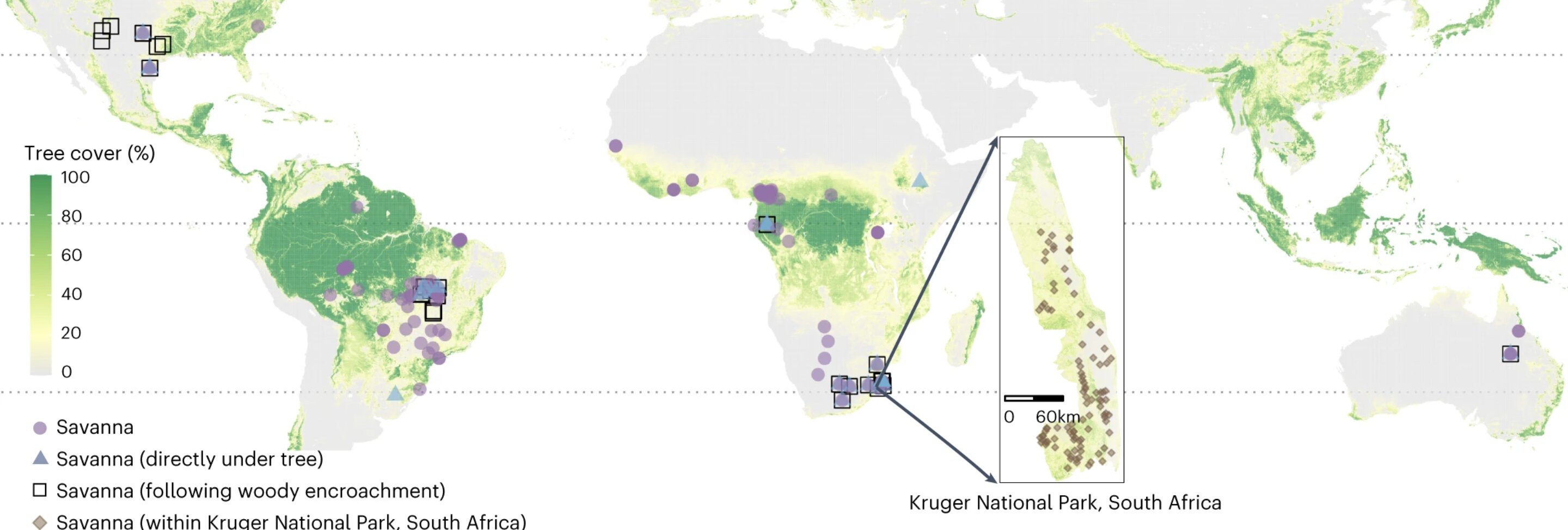Global warming’s ever-increasing toll on the planet has been a focus of mitigation strategies in recent years, with carbon sequestration projects”>carbon sequestration projects playing a more prominent role in drawing carbon dioxide out of the atmosphere to store in solid or liquid form and therefore decrease the abundance of this greenhouse gas. By doing so, this reduces the trapping of solar radiation on Earth and thus aids a decline in the planet’s temperature.
One such carbon sequestration project has targeted tropical savannas and used the planting of trees (known as afforestation) to remove carbon dioxide from the atmosphere for storage in woody biomass of the growing tree and the soil as organic carbon. The former above-ground carbon storage is known to be effective, but that of underground carbon storage in soils is less well understood.
Measuring the success of this project remains challenging as grasses also produce soil organic carbon, and new research published in Nature Geoscience aims to uncouple the two so that the efficiency and expansion of afforestation carbon sequestration projects can be determined.
Dr. Yong Zhou, Assistant Professor at Utah State University, U.S., and colleagues investigated such a project in Kruger National Park, South Africa, alongside a host of global tropical savannas.
The researchers discovered that grasses contribute over half of the soil organic carbon down to a depth of 1m, and this was still the case for soils directly below trees. Soil organic carbon also varied positively and negatively with increasing tree cover, having a maximum 6% increase, therefore highlighting that afforestation may not be as effective at carbon sequestration as initially hoped, especially when compared to grasses.
2023-08-29 14:00:03
Link from phys.org rnrn
